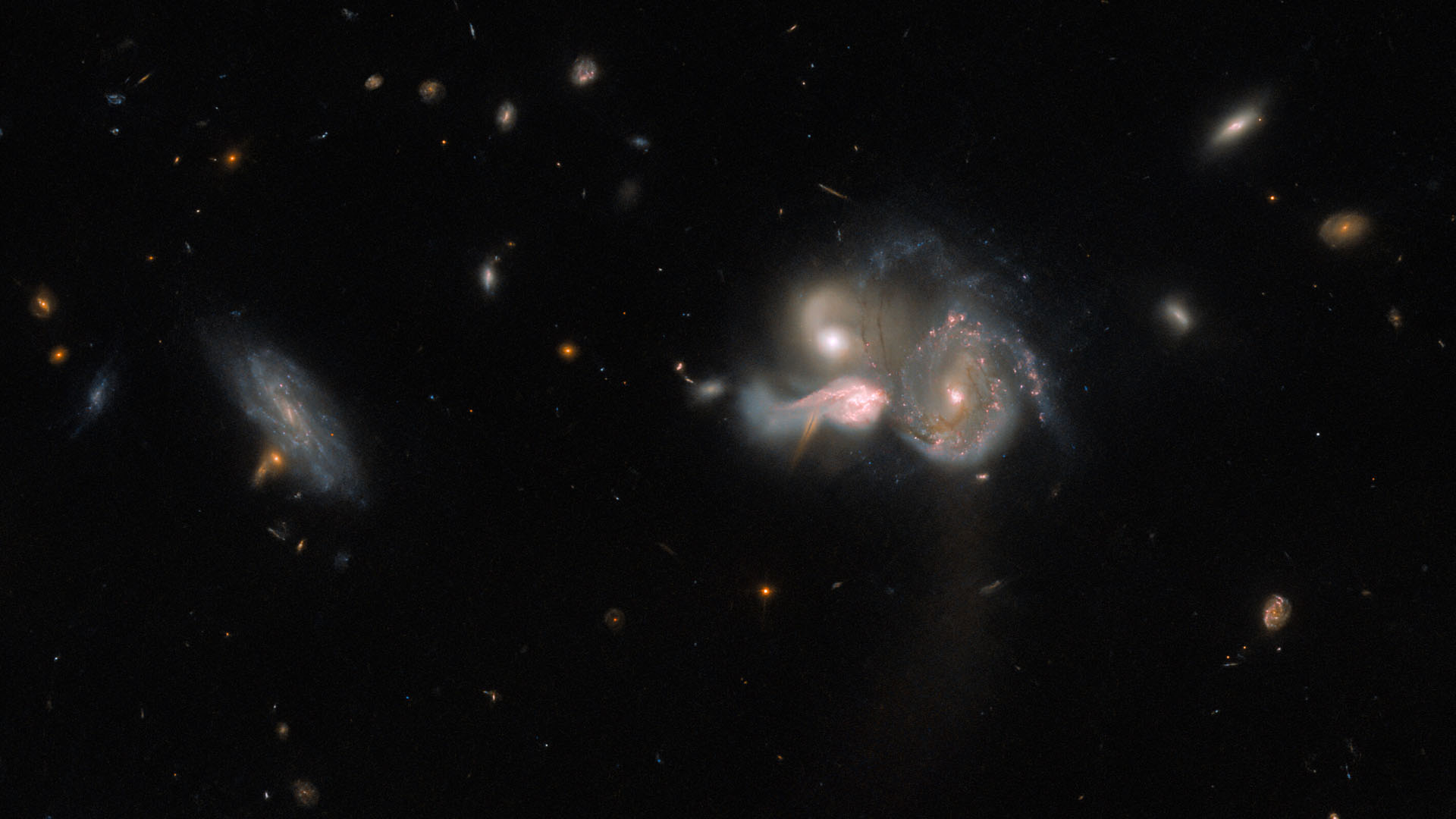The Hubble Space Telescope spots three galaxies about to collide
The three galaxies in the constellation Boötes are on a collision course and will eventually merge into a single huge bright galaxy.

A stunning new image from the Hubble Space Telescope shows three galaxies heading for a collision and merger. While galactic collisions are fairly common, this one is rare because each of the trio of galaxies is currently in the throes of birthing new stars.
The three galaxies, seen in the constellation Boötes, will eventually merge to form a single large galaxy. In the process, the spiral structure the galaxies now exhibit will be wiped out as a result of gravitational interactions between the trio.
The image shows the three galaxies, collectively known as SDSSCGB 10189, close enough to appear to be merging. The shapes of the galaxies are already distorted and strands of gas and dust can be seen linking them. The three galaxies are emitting a great deal of light.
As the collision unfolds, an unconnected spiral galaxy to the left sits serenely, almost like a cosmic equivalent of a passer-by "rubbernecking" a more down-to-Earth-collision taking place on a highway here on our planet.
Related: The best Hubble Space Telescope images of all time!
Within SDSSCGB 10189 the three large star-forming galaxies are just 50,000 light-years apart from each other. While this may seem like a vast distance that doesn't carry much danger of collision, in cosmic terms it's actually very close. For example, Andromeda, the nearest galaxy to our own Milky Way, is over 2.5 million light-years away from the sun.
The new Hubble Space Telescope image is part of an investigation into the origins of the largest and most massive galaxies in the universe, which astronomers call Brightest Cluster Galaxies (BCGs).
Breaking space news, the latest updates on rocket launches, skywatching events and more!
BCGs form when a large galaxy swallows smaller galaxies or when gas-rich galaxies like this trio collide and merge. Such cluster galaxies can be used to trace the formation of galactic clusters, which are immense cosmic structures consisting of hundreds or even thousands of galaxies. Scientists also hope that BCGs could provide hints about the evolution of the so-called "cosmic web," the tangled structure of clumps and filaments of material formed by dark matter that connect individual galaxies within a cluster.
There is still a controversy surrounding BCGs and at what time in the 13.8 billion-year history of the universe they formed. Some astronomers think these massive bright galaxies formed during an early epoch of the universe when it was about 19% of its current age. Others think BCGs are still forming and evolving today.
The merger of SDSSCGB 10189 could result in the birth of a BCG and thus could finally shed light on the mystery of how and when these massive bright galaxies form.
Follow us on Twitter @Spacedotcom or on Facebook.
Join our Space Forums to keep talking space on the latest missions, night sky and more! And if you have a news tip, correction or comment, let us know at: community@space.com.

Robert Lea is a science journalist in the U.K. whose articles have been published in Physics World, New Scientist, Astronomy Magazine, All About Space, Newsweek and ZME Science. He also writes about science communication for Elsevier and the European Journal of Physics. Rob holds a bachelor of science degree in physics and astronomy from the U.K.’s Open University. Follow him on Twitter @sciencef1rst.
